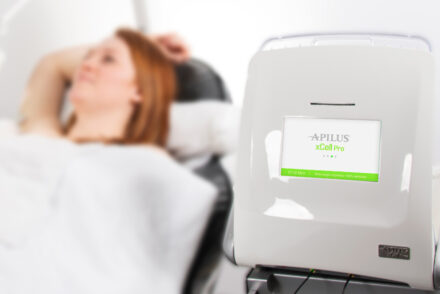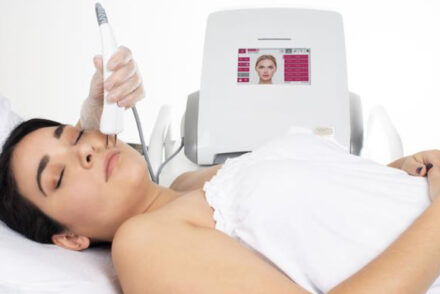High frequency current is the electrologist’s main tool. It is therefore important to know and understand it to be able to perform efficient and comfortable electrolysis treatments. Thermolysis 101 for a quick update on your basic knowledge.
High frequency
The principle of high frequency current is based on creating heat in the hair follicle. Through this heat, cells responsible for hair growth are destroyed. Heat is developed through a physiological process related to alternating current. In fact, radio frequencies of 13.56 or 27.12 MHz oscillate, from positive to negative, 13 560 000 or 27 120 000 times in a second, creating an attraction and repulsion of atoms surrounding the probe. These movements cause friction and vibration in the follicle, resulting in heat that can coagulate and destroy germ cells responsible for hair growth.
Fortunately, these frequency rates (13.56 or 27.12 MHz) create heat much more quickly than frequencies formerly used (1, 3 or 5 MHz). The evolution of technology allows today to work with shorter application times than in the past.
Adjusting the parameters
Since 13.56 MHz and 27.12 MHz radio frequencies are faster and allow shorter current application times (in milliseconds), the appropriate dosage of treatment parameters is of prime importance for permanent results. It is therefore important to know the specific effects of time and intensity during a hair removal treatment based on electricity.
The time adjustment of current flow must be considered depending on various factors such as the insertion depth, type of hair treated, hair stage and the area being treated. In general, the deeper the hair is, the longer the current application time should be. Indeed, the current tends to rise to the surface of the skin over time. Conversely, shallow hair requires shorter times.
Intensity, for its part, should be sufficient to generate an adequate amount of heat, as it is responsible for the coagulation of blood in the dermal papilla and for the destruction of cells responsible for hair growth. Insufficient intensity would not allow destruction. Some factors influence the intensity dosage, such as follicle hydration, probe size, and the type of hair treated. In general, if the hair is thick, the intensity will be increased.
The right dosage of current flow and intensity is paramount, because the goal is to destroy cells responsible for hair growth and not the other surrounding elements. Skin cells, melanocytes, elastin and collagen fibers must not be damaged; otherwise, irreversible damage could be caused at the skin surface. Therefore, you should be able to fine tune the parameters depending on each client and area to treat.







No Comments